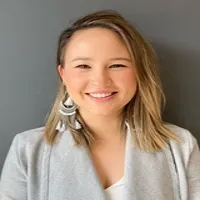16 Unexpected Advertising Experiment Results that Reshaped Brand Campaigns
Unexpected results in advertising experiments have the power to reshape entire brand campaigns. This article delves into surprising outcomes that have transformed the way companies approach their marketing strategies. Drawing from expert insights across various industries, these findings challenge conventional wisdom and offer fresh perspectives on effective advertising techniques.
- Behind-the-Scenes Videos Drive Unexpected Engagement
- Urgent Solutions Build Trust in Roofing
- Local Print Ads Outperform Digital Campaigns
- Specific Ads Attract Quality Roofing Clients
- Low-Production Ads Outshine Polished Content
- Spanish-Language Ads Boost Land Sales
- Emotional Messaging Doubles Conversion Rates
- Price Comparison Charts Resonate with Customers
- Radio Spots Spark Small Business Interest
- Bold Headlines Increase Campaign Performance
- Digital Channels Triumph Over Direct Mail
- Manual Campaign Control Beats Automated Settings
- Global Search Ads Yield Surprising Results
- Educational Content Outperforms Traditional Advertising
- Transparency in Flooring Ads Boosts Inquiries
- Strategic Ad Placement Transforms Data Recovery
Behind-the-Scenes Videos Drive Unexpected Engagement
One advertising experiment that surprised me was testing short, behind-the-scenes videos on Instagram Stories for our home decor brand. We thought polished, product-focused posts would perform best, but these candid clips of our team making pieces and sharing design tips drove way higher engagement and click-through rates. We thought our audience wanted aspirational imagery, not real-world process insights. The results changed everything: we started prioritizing authenticity and storytelling over aesthetics.
For subsequent campaigns, we allocated more budget to short-form, behind-the-scenes content across multiple platforms with direct calls to action. This also influenced our email marketing, where we started including "insider" content about product development, and open and conversion rates went up. The biggest lesson was that transparency and personality can trump perfection, and this changed how we position our brand to our customers.

Urgent Solutions Build Trust in Roofing
During storm season, we ran a small digital campaign highlighting temporary roof tarping, expecting it to serve only as a short-term service ad. Instead, the response revealed that homeowners viewed tarping as a signal of trustworthiness—proof that we would show up quickly when damage occurred. Leads from that campaign converted into full roof replacements and restoration projects at a much higher rate than broader service ads.
The takeaway was that specific, immediate solutions resonate more than generalized promises of expertise. Since then, we have shifted our campaigns to focus on single entry points, like water extraction within 24 hours or mold inspections within a week, which then build into longer-term contracts. The unexpected lesson was that urgency paired with a tangible first step builds more credibility than highlighting every service at once.

Local Print Ads Outperform Digital Campaigns
We once tested a small series of print ads in a neighborhood newsletter, expecting only modest local visibility. The surprising result was a surge in calls from homeowners who mentioned they preferred hiring a service they saw connected to their own community rather than a broad digital ad. The trust factor of being featured alongside school events and local announcements carried more weight than the larger online campaigns we had been running. This shifted our strategy significantly. Instead of focusing exclusively on digital reach, we began allocating part of our budget to hyperlocal outlets—church bulletins, neighborhood associations, and school sponsorships. The return on investment proved stronger, and the referrals gained from that visibility have continued to build. The experiment taught us that relevance often outperforms scale when it comes to building long-term loyalty.

Specific Ads Attract Quality Roofing Clients
I don't think about it in terms of "advertising experiments." My approach is simply to be honest. Early on, I was running a generic ad that just said "Houston Roofing." The results were unexpected: I was receiving many calls, but they were all from people who just wanted the cheapest price. That was the finding that completely reshaped my advertising.
I realized that my ad was attracting the wrong kind of work. So, I changed it. I started running ads that were much more specific. I changed the ad to say something like, "Quality Roof Replacements, 25-Year Warranty." I began highlighting the specific kind of work we did and the quality we delivered. I was telling people what we were good at, not just that we did roofing.
The unexpected results were a little scary at first. The number of calls dropped by about 50%. But the quality of the calls I did get was night and day. The people who were calling were already looking for a quality job. They weren't just looking for the cheapest price. The conversation was about materials and warranties, not about price.
My advice to other business owners is to stop trying to get the most calls. The best ad you can run is one that tells people what you're good at. You have to be honest about the kind of work you do. The number of calls you get doesn't matter. The quality of the calls you get is what matters. That's the only advertising that will ever truly work.
Low-Production Ads Outshine Polished Content
One of our biggest surprise ad tests was running "low-production" creative ads in conjunction with our high-quality, studio-produced ones.
The test:
We tested short, low-production, rough-around-the-edges TikTok-style videos on a smartphone — low-production product demonstrations, behind-the-scenes, and even influencer-style "unboxings." These ran alongside our normal high-dollar ads.
Surprise outcome:
The low-production ads achieved 35% higher CTR and 22% better CPA than the refined ones. Audiences clearly favored content that felt native to their feeds rather than looking like it was from a classic ad.
How it impacted our strategy:
- We started allocating a minimum of 30-40% of the ad budget to UGC-style creative.
- We established a testing pipeline for creative, cycling through ads weekly with quick-turnaround content.
- Refined creative didn't disappear, but we kept it in reserve for retargeting or brand credibility campaigns, while "raw" ads became the main source of cold traffic.
The takeaway: authenticity wins out over perfection in most digital channels, and experimentation with ad style is as crucial as targeting audiences.

Spanish-Language Ads Boost Land Sales
An early experiment with Spanish-language radio spots produced a far greater response than anticipated. We expected interest to come primarily from English-language ads, but the calls and office visits following the Spanish broadcasts exceeded them by nearly 40 percent. Families appreciated hearing about land ownership opportunities in their first language, which made the message feel more approachable and trustworthy.
The results reshaped our campaigns by showing us that cultural connection mattered more than polished production value. Since then, we have prioritized bilingual outreach across signs, flyers, and social media. Instead of treating translation as an afterthought, we design campaigns from the start with both English and Spanish messaging. That shift not only widened our reach but also strengthened relationships with the families we serve, reinforcing that clear communication in a client's preferred language is one of the strongest forms of advertising.

Emotional Messaging Doubles Conversion Rates
Our advertising used to be a shotgun approach. We were running broad campaigns to a wide audience, but the ROI was terrible. Our marketing team was focused on getting a lot of clicks, but they weren't leading to many sales. We were making educated guesses, and it was holding us back.
The advertising experiment that yielded unexpected results was to completely shift our messaging from a focus on the product to a focus on the emotion behind the problem. We tested two ads. One was a traditional ad that showed a product's features. The other was an ad that showed a person who was struggling with a problem, and the ad ended with a simple phrase: "We'll take the stress out of your day."
The findings completely reshaped our subsequent campaigns. The ad that focused on the emotion behind the problem had a conversion rate that was more than double the ad that focused on the product's features. We learned that our customers don't just buy a product; they buy a sense of relief. Our campaigns are now focused on empathy, not just on a product.
My advice is that the best advertising is not a sales pitch. It's a message that speaks to a customer's biggest frustration and shows them that you understand their world. The best way to be a leader is to be a person who is here to help their customers.

Price Comparison Charts Resonate with Customers
One of the biggest surprises came from testing a simple price-comparison ad. Instead of focusing on design or lifestyle, we ran a head-to-head chart showing our price per square foot next to big box stores. The creative looked almost boring to me at first. But customers loved it. The transparency hit a nerve, and it quickly became one of our top-performing ads.
That shifted my strategy. I stopped assuming people only wanted aspirational visuals and started leaning harder into proof such as numbers, side-by-side breakdowns, and clear savings. It reminded me that sometimes the "plain" approach is exactly what builds trust and gets people to take action.
Radio Spots Spark Small Business Interest
An experiment with local radio ads produced results we did not anticipate. The initial assumption was that digital channels would dominate lead generation, but the radio spots sparked a wave of inquiries from small business owners who listened during commutes. Many of them had dismissed Direct Primary Care as a niche option until hearing a straightforward explanation in a familiar local medium.
The findings reshaped future campaigns by showing the value of pairing traditional advertising with digital strategies. We began running coordinated efforts where a radio ad would introduce the concept, and digital retargeting would provide deeper education. This two-step approach significantly improved conversion rates because prospects were primed by a trusted local voice before encountering more detailed online content. It underscored that credibility often comes from meeting people in the channels where they already feel comfortable.

Bold Headlines Increase Campaign Performance
Our A/B testing experiment on ad campaign headlines revealed surprisingly dramatic results. The bold, attention-grabbing headline outperformed the safe, straightforward option by a substantial 70% margin, which was far beyond our initial expectations. This clear data point fundamentally changed our approach to marketing communications across all channels. We now prioritize bold messaging that challenges conventional thinking in our industry, which has become a cornerstone of our brand's voice in the marketplace.

Digital Channels Triumph Over Direct Mail
Our postcard mail campaign, which we initially believed would bring a fresh approach to reaching potential customers, produced almost no orders despite a significant investment in thousands of mailers. This unexpected outcome taught us a valuable lesson about understanding our audience as an online-only company with younger customers who rarely engage with physical mail. Based on these findings, we quickly redirected our strategy toward digital channels, implementing a 4-day email sales campaign that not only cost less but also generated substantially higher conversion rates. This experience fundamentally changed how we approach our marketing mix, ensuring we prioritize channels that align with our customers' actual behaviors rather than pursuing novelty for its own sake.

Manual Campaign Control Beats Automated Settings
This is very detailed, but I recently ran a test on Meta that investigated the use of Meta's Advantage+ settings for campaign budget, audience, and placements, essentially giving Meta full control over all three steps. I split-tested this against a campaign where I manually chose the budget by ad set, selected interest-based audiences, and excluded some placements. The campaign without Meta's Advantage+ turned on performed better, achieving a 1.58 ROAS, while Meta's Advantage+ only achieved a 0.93 ROAS. As a result, we stopped relying on Meta's Advantage+ and have leaned into our own market research.
Global Search Ads Yield Surprising Results
Advertising Experiment: The Global Search Ads
As the Director of LH Talent Agency (established 2022), we recruit freelance streamers and agents for top live-streaming apps like Poppo, Chamet, and Niki. Our success hinges on a steady flow of talent. Our most significant and surprising advertising experiment was a pivot from failing organic and social strategies to a highly specific Google Search Ads campaign.
The Challenge (Late 2022)
Lead Crisis: Our primary source of talent, the organic ranking of our old site (livehosting.xyz), plummeted, causing a critical drop in registrations.
Social Failure: Direct affiliate links violated most ad policies. Driving traffic to landing pages via social media ads (Facebook, Instagram, TikTok, etc.) failed to generate any viable leads.
The Experiment and Unexpected Result
We launched a campaign using Google Search Ads only on our new, faster site, LHTalentAgency.com.
The unexpected winning approach contradicted our initial, highly filtered efforts:
Initial Mistake: We initially used every filter in Google Ads, which narrowed our audience too much.
The Winning Strategy: We opened the campaign to all countries and all languages.
Keyword Focus: We focused strictly on exact match keywords pulled from our past successful organic searches, combined with aggressive negative keyword filtering to ensure high-intent traffic.
Cost Efficiency: We set a simple maximum CPC of INR 50.
The unexpected result was a massive success: this broad-yet-focused Search Ad strategy yielded better results than our previous peak organic performance.
Reshaping Subsequent Campaigns
This experiment completely reshaped our marketing and business growth:
Search Over Social: We immediately shifted focus and budget away from social media lead generation, making Google Search our primary paid acquisition channel.
Global Is Key: The success of opening the campaign to all countries and languages proved that the demand for freelance agents in this niche is truly global. We now approach talent sourcing with a global mindset.
Data-Driven Keywords: We learned that our most valuable assets were the high-intent, historical organic search terms. Our campaigns now rely entirely on analyzing and targeting these exact keywords.
Business Scaling: This strategy provided the stability and scalability needed, contributing to a 1000% growth in 2023 and allowing us to efficiently grow the company.
Mahesh Bairwa
Director, LH Talent Agency

Educational Content Outperforms Traditional Advertising
One advertising experiment that surprised me was when we ran simple educational content instead of polished ads.
We created straightforward tutorials about preparing game files for manufacturing and shared them online. To my surprise, they outperformed traditional campaigns because they felt authentic and helpful. It reshaped my approach in the sense that I learned giving away knowledge builds more trust than flashy ads ever could.
Transparency in Flooring Ads Boosts Inquiries
We tested showing before-and-after photos of actual flooring failures alongside our installation work, expecting it might scare customers away. Instead, inquiry volume increased 55% because customers appreciated the education about what poor installation looks like. This transparency positioned us as trusted advisors rather than just vendors. The campaign's success taught us that customers value education over sales pitches, fundamentally changing our content strategy to focus on industry insights.

Strategic Ad Placement Transforms Data Recovery
As the CEO of DataNumen, one advertising experiment that completely transformed our approach was when we tested placing ads on high-ranking third-party websites instead of relying solely on our own SEO efforts.
Initially, we focused heavily on improving our website's search engine rankings. However, we discovered that users typically find data recovery solutions during crisis moments when they're frantically searching after a data disaster occurs. During these high-stress situations, they often click on the first relevant results they see, regardless of whether it's an organic listing or advertisement.
Our breakthrough came when we realized that if our own website wasn't ranking ideally for critical data recovery keywords, we could strategically compensate by advertising on other high-ranking third-party sites that users were already visiting during their search process. This approach, combined with targeted Google Ads, allowed us to intercept users at the exact moment they needed our data recovery expertise.
The unexpected result was that this "interception strategy" actually converted better than traditional SEO efforts alone because we were meeting users precisely when they were in crisis mode and most motivated to find a solution immediately. This finding completely reshaped our advertising philosophy - instead of just chasing better organic rankings, we now strategically position ourselves across the entire search ecosystem where our distressed users are likely to land.
This approach has proven especially effective in the data recovery industry, where timing is everything and users need immediate access to reliable solutions when disaster strikes.





